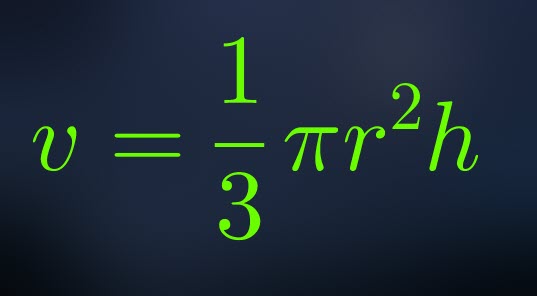

Implicit differentiation
Sometimes we are presented with equations in two variables, ![]() and
and ![]() that may have multiple solutions for
that may have multiple solutions for ![]() in terms of
in terms of ![]() or for
or for ![]() in terms of
in terms of ![]() .
.
The solutions found will be implicitly defined by the given equation.
For parametric functions, we use the following rule:
Problem 1
Given:
![]()
Find ![]() or
or ![]()
Solution:
![]()
![]()
![]()
Finally :
![]()
We know that the given equation is a circle.
![]() is simply the slope of the tangent of the circle at any point of coordinates
is simply the slope of the tangent of the circle at any point of coordinates ![]()
Problem 2:
Given:
![]()
Find ![]() or
or ![]()
Solution:
![]()
![]()
![]()
![]()
![]()
Finally :
![]()
Problem 3:
A sphere has a radius ![]() at time
at time ![]() . What will be the value of that radius
. What will be the value of that radius ![]() when the rate of increase of the volume
when the rate of increase of the volume ![]() is twice the rate of increase of the radius
is twice the rate of increase of the radius ![]() .
.
Find the corresponding value of the Volume ![]() .
.
Solution
The volume of a sphere is given by the formula:
![]()
![]()
But: At the time when the rate of increase of ![]() is twice the one of
is twice the one of ![]() , we can write:
, we can write:
![]()
![]()
We get:
![]()
![]()
The volume ![]()
![]()

![]()
![]()
Finally:
![]()
![]()
Problem 4:
Find the equation of the tangent and the normal to the curve:

At the point ![]()
Solution
We can find the ![]()
![]()
![]()
![]()
![]()
At point ![]() :
:
![]()
This is the slope of the tangent. It is clear that the slope of the normal is 1.
![]()
![]()
For the tangent, we know that:
![]()
![]()
![]()
![]()
![]()
Equation of the tangent:
![]()
For the nomal we use the same method but different slope:
![]()
![]()
![]()
![]()
Equation of the normal:
![]()
Problem 5:
Water is being poured, at a rate of ![]() into a leaking cylindrical cone shaped container with the top having 8 feet as diameter and which is 16 feet deep.
into a leaking cylindrical cone shaped container with the top having 8 feet as diameter and which is 16 feet deep.
When the water is 12 feet deep, it was measured to be rising at a rate of ![]() .
.
How fast is the water leaking?
Solution
The ratio of cone height over radius is :![]() . The diameter is 8 feet.
. The diameter is 8 feet.
We can then write:
![]()
Where ![]() is the height and
is the height and ![]() is the radius.
is the radius.
Let ![]() be the rate of volume change at time
be the rate of volume change at time ![]() .
.
![]() be the leaking rate at time
be the leaking rate at time ![]() .
.
![]() be the filling rate at time
be the filling rate at time ![]() . It is 10 ft^{3}/min at any given time.
. It is 10 ft^{3}/min at any given time.
![]() is the rate of change of the height at any time
is the rate of change of the height at any time
![]()
The volume of the cone:
![]()
But:![]()
![]()
![]()
Taking the derivative of v with ![]() as variable:
as variable:
![]()
![]()
![]() ft/min and
ft/min and ![]()
![]()
![]()
![]()
![]()
Finally:
The leaking rate is ![]()
Problem 6:
Find the minimum distance from the point ![]() to the parabola
to the parabola ![]()
What is the equation of the tangent of the parabola at the point of the minimum distance to ![]()
Solution
For each point we use the following coordinates:
![]()
The distance from any point:
![]()
![]()
![]()
![]()
The Distance:
![]()
![]()
![]()
![]()
![]()
We can see that the equation of the distance opens up. So the first derivative test is a minimum.
We just need the numerator to be ![]()
![]()
![]()
Let’s square both sides:
![]()
![]()
![]()
When ![]() we can see that
we can see that ![]()
Back to the distance to plug in ![]() and
and ![]() values:
values:
![]()
![]()
For the tangent:
![]()
![]()
![]()
![]()
For our point ![]()
The slope of the tangent is ![]()
![]()
The equation:
![]()
![]()
![]()
![]()
![]()
Finally
![]()
The tangent ![]()


Be the first to comment